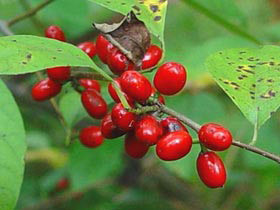Plants Need Snakes Too!
By Thomas Waser In Cold Blooded Creatures, UncategorizedFebruary 25, 2018
Snakes do so many great things for us humans! They eat a lot of pest species such as insects, mice, rats and other rodents, animals that could cause a lot of damage or even spread diseases. Some snakes produce venom that, while occasionally hazardous, provides us with all kinds of medical products that save thousands of lives every year. They are even eaten by humans in many places around the world, directly benefiting people as a source of food. Snakes are incredibly important to us (though we may not always realize it!), but they benefit all kinds of animal species besides humans. Even plants rely on these reptiles to help shape the ecosystem!


As we all know, plants begin their lives as seeds. It is important that seeds get as far away from their “parent” as they can; growing beneath their parent puts them in direct competition for sunlight, water and nutrients. More than likely, a seed that doesn’t fall far from the tree doesn’t last long. Some seeds rely on wind to blow them away, while others are swept away by rain water. Others rely on animals for transportation, hitching a ride on fur or feathers to reach a new destination. And a few seeds even hitch a ride inside an animal! These seeds are ingested when an animal eats fruit or berries, then are excreted whole after passing through the digestive system. By the time they have been expelled, they will likely have traveled a good distance from their parent!


Rodents often eat seeds, destroying them in the process. With their large cheek pouches, they are able to collect large numbers of seeds which they will take back to their burrows and eat. However, very often these rodents are themselves caught and eaten by larger predators, and many are still carrying the seeds in their cheek pouches when they are consumed! The predator then passes the seeds through their digestive system, becoming what we call a secondary seed disperser. Herpetologists from Cornell University conducted a study that identified rattlesnakes as important secondary dispersers. Examining 50 rattlesnakes, they found the remains of a rodent meal in 45 of them, and all their digestive tracts contained 971 seeds in total! All of these seeds would likely have been destroyed by the rodents, but were able to pass through the digestive tract of the snakes, some even germinating inside the snakes’ bodies!
Think about it, that is almost 1,000 seeds saved by less than 50 snakes enjoying a single meal! These snakes likely pass a massive number of seeds every year, giving new generations of plants a second chance at life. This would have an obvious impact on the ecosystem, and directly affect plant distributions and population densities. And with rodents serving as a food source for a huge number of snake species around the world, one can only assume that snakes have played a heavy role in shaping our environment! So be sure to stop on by the Virginia Living Museum this spring and say hello to one of these amazing “ecological engineers”!
Study Link: https://www.sciencedaily.com/






No Comment
Sorry, the comment form is closed at this time.